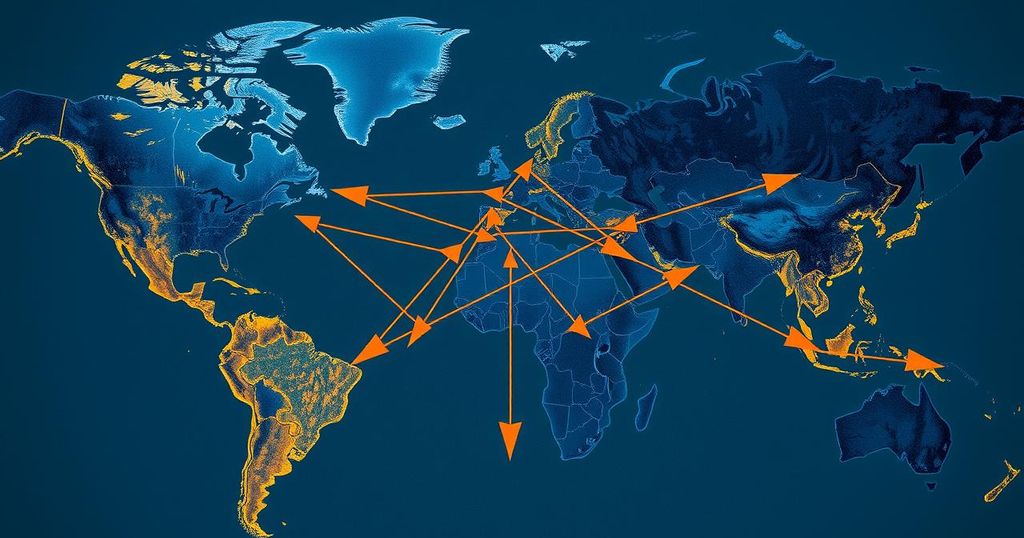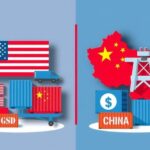Impact of Trump’s ‘Liberation Day’ Tariffs on China: Economic Repercussions and Responses
President Trump’s new tariffs on Chinese imports escalate the trade conflict, raising levies to 54 percent. China’s export-driven economy is notably vulnerable, with analysts predicting a GDP contraction of up to 1 percent. The tariffs will not only impact China but also U.S. manufacturers and consumers, indicating a broad disruption in global trade. Beijing’s potential countermeasures remain undefined, suggesting ongoing complexities in the economic relationship between the U.S. and China.
United States President Donald Trump’s implementation of new tariffs on Chinese imports has escalated the ongoing trade conflict between the two leading global economies. These so-called “liberation day” tariffs raise levies on Chinese goods to a substantial 54 percent, prompting a promise of retaliatory measures from Beijing. The repercussions of these tariffs may severely disrupt global supply chains and adversely affect American interests as well.
China’s economy, which relies heavily on exports, stands to be significantly impacted by the new tariffs. In 2022, sales of Chinese goods to the United States surpassed $500 billion, representing 16.4% of China’s total exports. The tariffs threaten to undermine China’s fragile economic recovery amid a longstanding debt crisis within the property sector and persistently low consumer spending, which had earlier been addressed through extensive fiscal stimulus measures. Economists suggest that the new tariffs could negate any benefits from these stimulus efforts.
The tariffs introduce a 10 percent levy on imports globally, although China faces an additional burden due to its pre-existing trade deficit of $270.4 billion with the U.S. The recent measures add 34 percent to a previously imposed 20 percent tariff, totaling 54 percent on imports from China. Experts predict that these tariffs will detrimentally affect China’s GDP, with expectations of an economic contraction ranging from 0.5 percent to 1 percent. The sectors most vulnerable include electronics, textiles, and machinery, which are predominantly supplied by China to the U.S.
Notably, the implications of the tariffs extend beyond China, as many U.S. firms depend on Chinese goods. Retaliatory consequences are anticipated for U.S. manufacturers and consumers alike. Analysts argue that the tariffs could adversely impact the global trade system, affecting both economies involved and potentially leading to further complications in international trade relations.
In response, Beijing has not yet clarified its specific countermeasures but has indicated potential increases in existing tariffs levied previously. Economists recommend that China’s retaliation be both calculated and strategic, focusing on strong yet measured actions. Last month, China introduced 15 percent tariffs on coal and liquefied natural gas from the U.S., targeting industries that are vital to Trump’s political base. Although Beijing advocates for dialogue, historical patterns suggest that tariff escalations may occur rapidly, while resolutions could be prolonged.
In summary, President Trump’s introduction of “liberation day” tariffs raises significant levies on Chinese imports, intensifying the trade conflict and adversely affecting not only China’s economy but also the broader global trade landscape. As China grapples with a delicate economic recovery, these tariffs threaten to negate previous fiscal stimulus efforts and adversely impact GDP growth. Beijing’s anticipated retaliatory measures, while yet unspecified, promise to add layers of complexity to the ongoing trade dispute, revealing a intertwining relationship between the two economies that requires careful management to avert further escalation.
Original Source: www.nbcrightnow.com








Post Comment